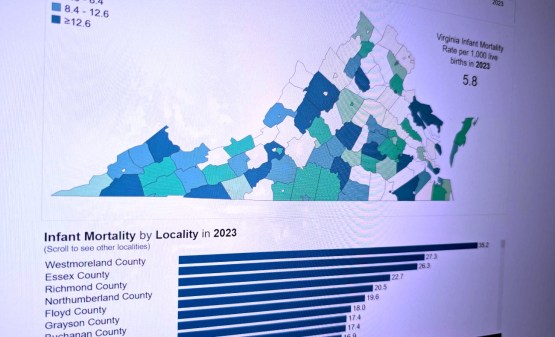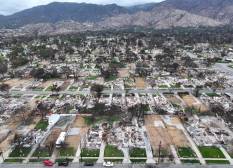Virginia presents 75 years of Chesapeake Bay data

The fleshy sticks protruding from the face of a catfish are called barbels and they’re covered with taste buds that allow the fish to taste its surroundings simply by brushing against them. The white and blue catfish swimming in Chesapeake Bay are probably happier with the things they’re tasting these days, as water pollutants are on the decline. Managing the health of Chesapeake Bay is a long-term ecological project supported in part by a new collection of data announced today by Virginia Gov. Terry McAuliffe.
The data collection, called simply “Bay Data,” can be found on the state’s official open data portal. Twelve data submissions in three categories — fisheries surveys, wetlands and submerged grasses, and water quality — comprise the collection of previously-available but widely-scattered government data. The addition is not intended to be any revelation to ecologists and academics, said Russ Baxter, deputy secretary of Natural Resources for Chesapeake Bay, but a resource to be used in the scientific community’s long-term support of the region.
“I think it’s increasing the knowledge and understanding both of us as managers and state government, our federal partners and others who are fairly well-engaged in Chesapeake Bay restoration, but also simply for the average citizen to understand a little bit better what is an incredibly complex ecosystem,” Baxter said. “It’s through data sets that have been gathered over many years that really give you a much better picture of what the condition of the bay is than you would get from a snapshot in time — a year’s data or a couple of years’ data.”
Bay Data contains historical data — some in excel spreadsheets, some in PDF form and some simply in images and text posted to various websites — that reaches as far back as the 1940s. Putting it all together gives researchers, academics and land managers from around the world a means to better understand how estuaries function.
“What this gives you is the longer-term view, which is critically important,” Baxter said. “You can’t manage year-to-year. We have to understand that management is a long-term enterprise and that this kind of data — we can marry it up against the climatic conditions of that particular year, or what have been the trends in sea-level or water temperature or rainfall or many other things — and start to see some correlations that we might not have otherwise seen.”
The outlook for the bay is positive, Baxter said, and repositories of data like this one can only help things further.
“We are cautiously optimistic,” Baxter said. “We’re seeing some fairly significant signs of resiliency. We used to have wide variations in the amount of submerged aquatic grasses and those populations seem to be stabilizing. We’re seeing record numbers in recent years of blue crab populations, and in oysters, reductions of nitrogen and phosphorus, which are the pollutants of most concern to bay water quality in most of the major tributaries. I would venture to say we are making progress, albeit it takes time and money and effort and it’s not going to be done overnight, but I think we’re on the right end of the trend right now.”






